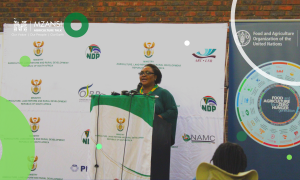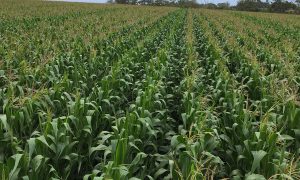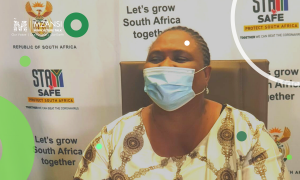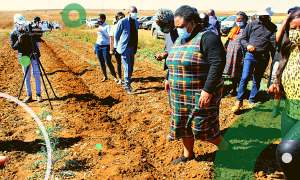In January, the South African avocado farmers received exciting news regarding the lifting of the ban on avocado exports from the country to Japan. The ban was lifted with both countries agreeing on a plan to ensure the correct implementation of export protocols.
Mzansi Agri Talk spoke to Trade Lawyer and Director at Avoport, Shandini Naidoo, regarding the ban and the subsequent lifting. Naidoo also serves as a board member at the National Agricultural Marketing Council (NAMC).
MAT: What were the main reasons behind the ban?
SN: To put it correctly, the ban was more along the lines of denying access of South African avocados to the Japanese marketplace, specifically relating to the “Haas” Avocados variety. The culprit one could say to the “denied access”, was the False Coding Moth – a pest that is indigenous to South Africa and is deemed a phytosanitary pest by major export market phytosanitary standards and requirements.
MAT: How did the ban affect avocado farmers and exporters?
SN: South Africa is considered one of the largest and leading avocado exporting countries in the global marketplace. The ban or blockage of South African avocados entering Japan limited the scope of our market access and resulted in the reliance on the existing markets, such as Europe.
With the increasing protectionist stance now taken by some countries and the recent strikes across Europe by farmers, it is becoming increasingly evident that we should not place over reliance on the bigger markets and rather look to diversifying our market access by looking to smaller markets as well.
If Covid-19 taught us anything, it must be that diversification and intra-Africa trade is key to boosting the agricultural sectors, not only in South Africa but across the continent.
MAT: During the ban period, what happened to the actual avocados that were meant to be exported specifically to Japan?
SN: South Africa was not dependent on the Japanese market. Unlike our reliance on the current marketplaces such as Europe, the US and the UAE. Exports of avocados and avocado products were not lost in the sense of destruction of crops. Rather, the harvest was diverted to countries South African exporters had access to. Japan presents the opportunity for South Africa to diversify our agricultural market by the lifting of the ban and the opening of the Japanese market to South African Avocados. Japan doesn’t present a large market share like other markets we are already participating in, however, the opportunity to enter Asia through China and Japan is welcomed. South Africa does face competition from Southern Hemisphere producers who share the same season. Based on the quality and the good standards being maintained in the country, avocado producers and exporters have the opportunity to now grow our market share in Asia by maintaining the highest standards possible.
MAT: What do you think should be done to avoid the ban in the future?
SN: Maintaining the standards required to export to Japan is imperative to a long-term market access scenario. Due to how expensive the exporting exercise is, I do believe coordination of efforts and collaboration between farmers, agro-processing units, export management companies (EMC’s), research institutions and DALLRD are important.
Access to information, regarding the compliances requirements to meet the standards expected to export to Japan, will allow role-players to align themselves accordingly.
Each country has their own set of requirements, meeting these requirements is imperative. Transparency between stakeholders in terms of the export programme and the implementation good agricultural practice standards across the supply chain is essential to keeping the Japan market open to South African avocados.
South Africa should seek buyers looking to purchase not only the raw produce but rather the value added products produced locally by certified and competent exporting agro-processing units. We should move away from being net exporters of raw produce and look toward building a more robust and vibrant exporting market for value added goods.
MAT: Are there any other challenges faced by avocado exporters that you feel need to be addressed?
SN: To begin with, exporting is an expensive exercise. It takes grit, risk and perseverance from the starting of the sourcing process right up to meeting expectations and maintaining strong relations with buyers in other countries.
Add a highly perishable fruit and the level of exporting becomes more complicated. The list of challenges for exporting highly perishable goods is a long one. Yet, it does come with success and long term market access if done correctly.
MAT: Will the current heatwave have any impact on the quality and quantity of avocados?
SN: Avocado trees can thrive in warm conditions provided there is sufficient water supply available. However, extreme weather conditions like the heat wave and drought experienced recently across South Africa do take its toll on not only the avocado industry but across the agricultural sector.
Extreme weather conditions not only pose a threat to the young and old avocado trees but to the quality of the marketable fruit.
During the heatwave, mature fruit that was exposed to the heat resulted in the softening of the fruit and exposed the fruit to both indirect and direct damage, which decreases the fruit quality. This not only hinders the supply to local markets but prevents fruits being eligible to export.
Concern must be directed to the tree, especially young avocado orchards. The avocado trees are vulnerable and can be either damaged or killed in high temperatures and dry climate conditions.




















